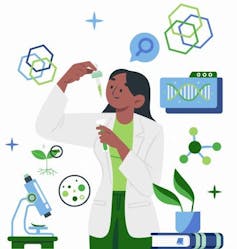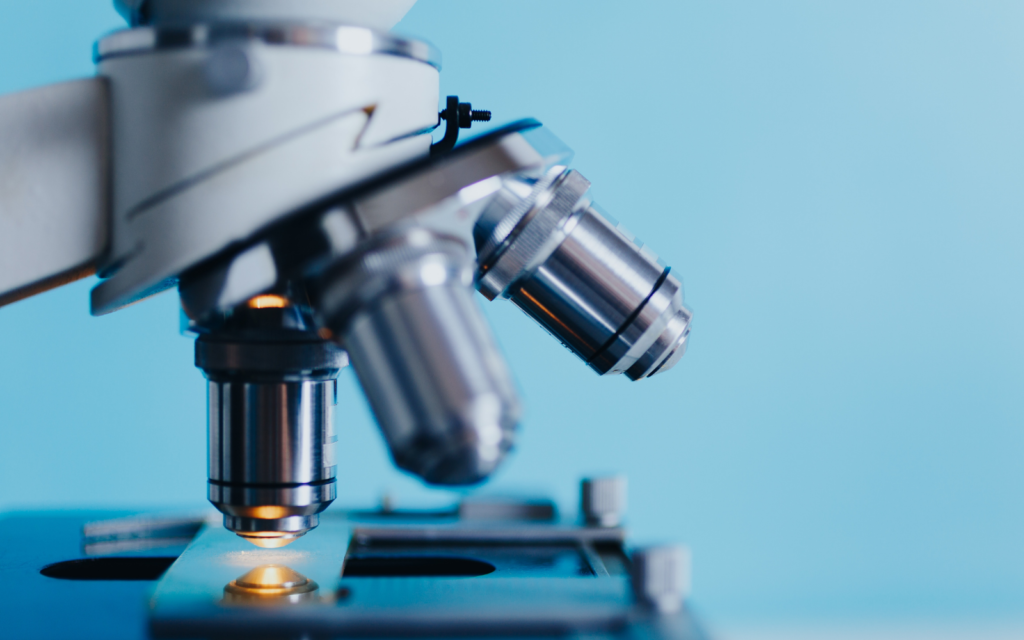An ill newborn’s life is hanging by a thread, and only the right diagnosis will afford her the treatment that may save her life. A cancer patient’s therapy can be tailored to the specific type of tumour they have, if only the doctors know what the molecular targets are that will make the drugs effective for that patient. Parents may finally get a name for the syndrome that their child has been living with.
All of this can be achieved by sequencing the genome of a patient. A genome is a set of genetic instructions that can be deduced through examining blood or saliva. When scientists sequence genomes, they are involved in interpreting the changes between one individual and another and by determining the changes that explain a disease, provide a diagnosis or predict the best treatment.
Read more: Medical schools need to prepare doctors for revolutionary advances in genetics
At the University of Toronto, I teach students how to run the experiments to analyze a genome. The students learn how to sequence the genome, what the data looks like and how the results can be used to provide a diagnosis or choose the right medication. Virtual labs or “lab simulations” offer a way to experience the experimental steps for a biological experiment on a screen. Even before the pandemic started, I was experimenting with virtual labs in my classroom.
Some lab work continued in person
Virtual labs for genome sequencing, like virtual labs in some other sciences, offer some advantages and opportunities for student learning. However, virtual labs for genome sequencing are not a replacement for hands-on, wet lab experience (where biological matter can be analyzed and tested by using various liquids), and are certainly not replacing in-person training for professional purposes.

Even when other instruction was moved online due to COVID-19, some wet lab courses have continued in person since the summer of 2020. I spoke with Ahlia Khan-Trottier, director of the division of teaching labs at the Temerty Faculty of Medicine at the University of Toronto, who relayed that in the pandemic, “lab courses took various paths as decided by the course co-ordinators/departments — some remained fully in person with COVID-19 measures in place, some were hybrid and others moved fully online.”
In my case, a lab course in the department of molecular genetics where the students were going to run a sequencing experiment was postponed. It ran five months later with the necessary COVID-19 measures in place.
Move to online labs
Studies have shown that virtual genetics labs can enhance comprehension and motivation, thus improving the learning experience. Students click on a tube to open the lid of a vessel or turn the wheel of a virtual pipette — a hand-held device to transfer small amounts of liquids — to transfer reagents from one container to another. No lab coat is required, no expensive machines and no dangerous chemicals.
In a virtual lab, there are no restrictions to the cost of an experiment, whether clinical specimens can be used, and no ethical concerns or biohazards to contend with. Virtual labs are very “forgiving.” Students can start over, reagents are abundantly available and the game-like feeling is rewarding.
Virtual labs bridge theory and practice by providing a multimedia connection between abstract concepts and practical execution. Students use their laptop or phone to observe, click, drag and type in response to videos, questions and instructions.
Virtual reactions are instantaneous and students do not have to wait to use shared equipment such as PCR machines — a machine used to heat or cool samples to allow chemical reactions and physical processes to occur at a specified temperature.
Different kinds of virtual labs
Many virtual labs are now being mostly run through software or online applications developed by developers that are either accessible for free or can be purchased by institutions.
Resources include free simulations and interactive explorations (like LabXchange), as well as more complex open-ended explorations with immersive animations (like Labster). Such virtual labs combine illustrations, explanations, prompt critical thinking and offer incentives through “gamification.”
Some colleagues of mine are also working on building tailored virtual labs for their courses.
Student experience of virtual labs
Before the pandemic, the grad students who were using virtual labs in my classroom appreciated the added resource but were very clear that virtual labs could not replace a wet-lab experience. One student described the simulation in the virtual lab like a lab tour, where you get to review the workflow and mentally prepare for the wet-lab but are not directly handing equipment.
It takes years of training to become proficiently skilled in clinical and research laboratory techniques. Dealing with the frustrations of getting equipment to work and developing the muscle memory of performing work hands-on cannot be replicated in the virtual platforms now widely available for genomic sequencing, nor can the lessons from learning in a group with peers.
Labs in the future
Still, virtual labs were gaining traction even before the pandemic, and their use has been sped up during pandemic-related remote teaching.
Instructors and students will continue to value the enhancements that come from lab simulations. For my students, the simulations are useful to catch up and fill in any gaps that stem from different backgrounds.
Furthermore, running through a lab on a computer is an excellent way to prepare for an in-person lab, when there is little room for mistakes. Some topics in genomics lend themselves particularly well to virtual instruction, for example learning how to effectively search databases for research and how to retrieve information about the genome.
And certainly, students will continue to appreciate the animations and lab simulations that illustrate difficult concepts, where a moving image says more than a thousand words.
This article first appeared on The Conversation.




